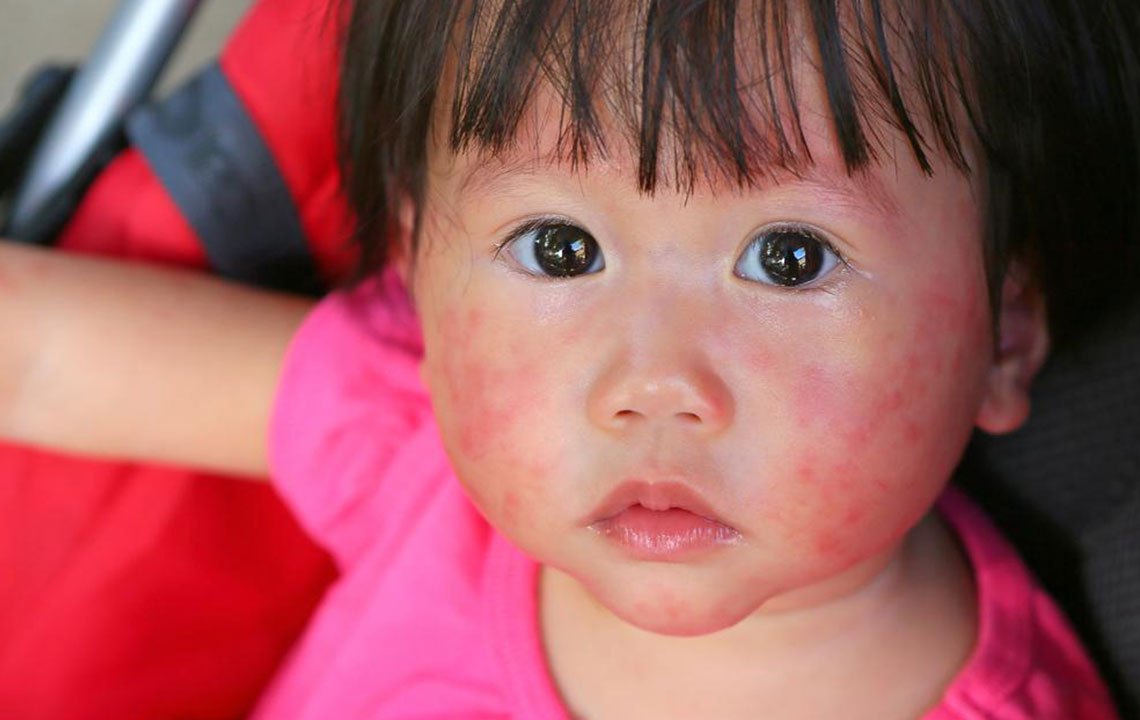All You Should Know about Eczematous Dermatitis
A common condition of the skin leading to inflammation is known as eczematous dermatitis, popularly known as eczema or even dermatitis. The two classifications eczematous dermatitis are acute eczema (or dermatitis) were fast growing red rashes get swollen and blistered. The second type is chronic and involves old irritable rashes that have turned darker and thicker and the ones that you probably have scratched as well.
This eczematous dermatitis shows many signs and symptoms, and some of them are:

- There is intense itchiness
- The skin looks scaly and rough due to flaking off of the epidermis layer
- Bleeding and patchiness makes the skin look red
- Watery blisters that contain a liquid and they form a crust after expelling the liquid
- Painful fissures or deep cracks may also develop on the affected skin
Let’s look at the types of eczematous dermatitis:
Atopic dermatitis
This is among the most commonly known eczema affecting those having asthma, genetic eczema, hay fever, and an undefensive skin surface. It mostly sets in early during childhood but can occur at any age. Usually, the effect is evident on the hands, face, feet, inner elbows, and behind the knees.
Constant scratching cause thickness, redness, or wounds on the skin surface. Some other factors that worsen the symptoms of this dermatitis are soap, rough clothing, and household chemicals. Certains foods, dust mites, and other allergens can make the situation worse.
Some remedies for atopic dermatitis are lubricants and moisturizers, steroid creams, and immunizing drugs like dupilumab (dupixent) as a bi-weekly injection, and the ointment crisaborole (eucrisa) applied twice a day. Antibiotics and ultraviolet light can also ease the symptoms.
Contact dermatitis
The two kinds of contact dermatitis are irritant and allergic types. This eczematous dermatitis develops owing to chemicals and washing hands too often. The other causes include coming into contact with allergy-triggering substances like nickel, cosmetics, and poison ivy. As the hands are more sensitive to infection, one can get infected with contact dermatitis even when they don’t have atopic dermatitis.
The treatments for irritant contact dermatitis include moisturizers, steroid medications, and drugs like antibiotics in the form of a creams or tablets. The infected person should keep away from the cause. You can also wear gloves for protection.
Dyshidrotic dermatitis
This form of chronic and painful eczematous dermatitis manifests in the hands and feet, and the causes are not known.
The signs include extreme itchiness leading to blisters and then scaly patches. They could also develop into deep cracks.
You can ease the discomfort by using wet compresses, steroid drugs in the form of creams or tablets, and psoralen together with ultraviolet A rays.
Nummular dermatitis
This type of eczematous dermatitis is more widely seen in men than women. Men usually get affected by it in their mid-50s, whereas women in their teens or onset of adulthood.
Nummular dermatitis shows up as small round red marks. These appear on the legs, behind your hand, forearms, and on your lower back and hips.
The contributing elements of nummular dermatitis are not exactly known. Some of them are cold, and dry air, chemicals like formaldehyde, and exposure to metals like nickel.
Some remedies for nummular dermatitis include the application of moisturizer after a lukewarm shower or bath, steroid ointment, steroid tablet or injection, and antibiotics in the case of infection. Avoid scratching too.
Neurodermatitis
This breaks out as itchy spots. You can see these spots on your back, sides or behind your neck, genitals, wrists, scalp, ankles, and even inside and behind the ear. Subconsciously, you might try to scratch the spots while sleeping but this can make the matter worse. The irritated skin will get thick, infected, and wrinkles will develop.
The remedies lie in abstaining from scratching it. Also, steroid creams can provide some relief. For an infected scalp, you can intake a steroid called prednisone.
Seborrheic dermatitis
In this form of eczematous dermatitis, there is an occurrence of dandruff. In babies, the scalp gets affected while adults get dandruff on their sides of the nose, eyebrows, behind the ears, center of the chest, and groin. This happens due to the flakiness of the skin.
The underlying cause could be yeast living in these areas. Treatment becomes challenging for people with low immunity, and it becomes almost impossible for people infected with AIDS.
Remedies are different for babies and adults. Your doctor will recommend you to use a shampoo consisting of zinc pyrithione, selenium sulfide, antifungal applications, coal tar, and steroid lotions.
Stasis dermatitis
This form of eczema is commonly found in people with faulty veins in which their lower legs do not properly pump back blood to the heart.
The symptoms include crust formation on the skin which later turns brown.
The remedy is using steroid creams or ointments, lubricating creams or lotions, wet compresses, antibiotics for infection, wearing tight stockings, and exercise.
With this, you are more well-informed than others and geared up to combat and treat eczematous dermatitis.




